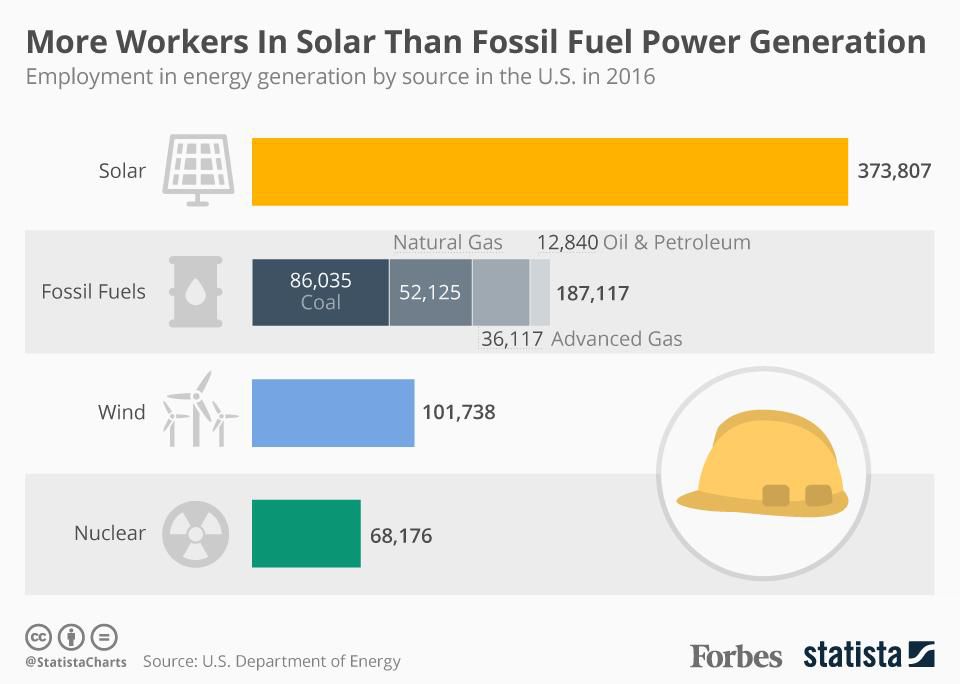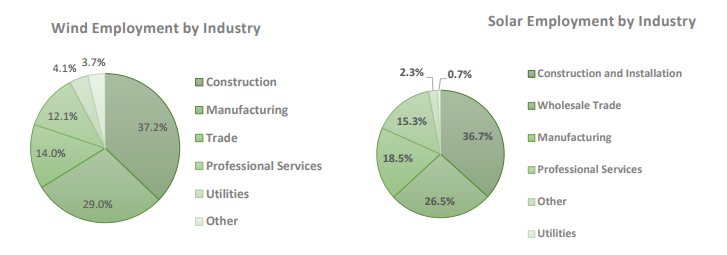The Sleight of Hand Behind Renewable-Energy Job Numbers
Wind and solar advocates often tout these industries as job creators, responsible for employing more people than coal, natural gas, or oil.
Ultimately, the point of the energy industry is to generate energy, not jobs, as my colleague, John Phelan, has succinctly discussed here.
However, if we are going to discuss the impact of certain jobs in the energy sector, we should fully understand the criteria being used to make these claims.
For example, the Natural Resources Defense Council (NRDC) makes this boast:
All told, nearly 1 million Americans are working near- or full-time in the energy efficiency, solar, wind, and alternative vehicles sectors. This is almost five times the current employment in the fossil fuel electric industry, which includes coal, gas, and oil workers.
This [solar power] is more than 40 percent of the overall electrical generation workforce and exceeds the combined employment of coal, gas, and oil workers connected with producing electricity that reached just under 200,000.
However, one can only arrive at this conclusion by misrepresenting the number of jobs created by wind and solar. These misrepresentations are, unfortunately, quite common.
For example, Forbes published an article which contains this figure, which shows the number of jobs created by wind and solar compared to other fuel sources, notably coal, natural gas, oil, and nuclear energy:

These renewable jobs claims stem from a report conducted by the U.S. Department of Energy 2017 U.S. Energy and Employment Report:
Just under 374,000 individuals work, in whole or in part, for solar firms, with more than 260,000 of those employees spending the majority of their time on solar [emphasis added]. There are an additional 102,000 workers employed at wind firms across the nation.
Economists generally quantify jobs in terms of full-time-equivalent jobs, not part-time jobs. Sadly, the Department of Energy report did not provide these numbers for the solar industry, which means we cannot know for sure how many people are employed full-time in the solar industry, but it is almost certainly fewer than 260,000 people.
Furthermore, the Department of Energy report shows 37.2 percent of the jobs created in the wind industry and 36.7 percent of the jobs created in the solar industry nationwide were temporary construction jobs, as shown by the graphs below:

The same trend holds true for Minnesota, where wind and solar provided more jobs than coal or natural gas, but many of these jobs were temporary construction jobs in nature:

Although there is no by-sector breakdown of construction jobs for each source of electricity generation at the state level, it is safe to assume that the majority of the construction jobs in the electric generation industry are concentrated in the wind and solar industries because Minnesota is not building new coal-fired power plants.
In short, claims that renewable energy is an opportunity to create jobs in the state are undermined by the fact that many of these jobs are part-time jobs, and they are often temporary by nature.
There is nothing inherently wrong with part-time or temporary construction jobs, but legislators must understand that renewable energy is no panacea for long-term job creation.